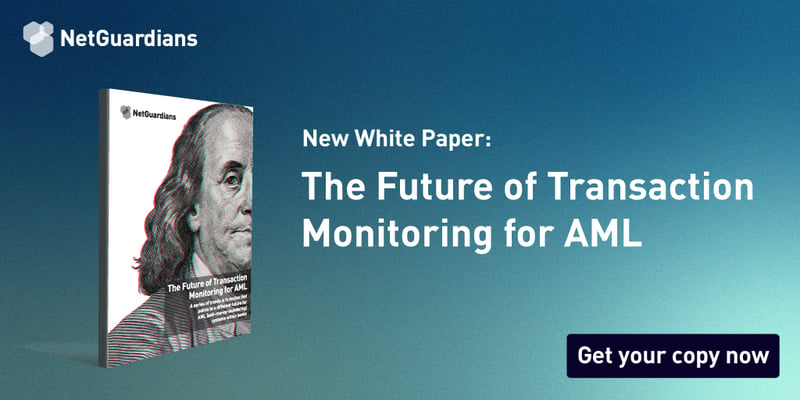NetGuardians’ solution can spot accounts used for both domestic and international money laundering in real time, saving banks time and money while protecting their customers and their own reputations, writes Sandy Lavorel
Last year, a report by Lloyds Bank revealed that around half of all money laundered in the UK was put through an account held by someone under the age of 24 – often students. The scale of the problem has prompted some universities to warn their students to be wary of suspicious job offers promising easy money that could result in them becoming money mules who launder cash for international criminal gangs.
Money laundering is becoming more sophisticated
Crucially, this younger mule profile isn’t just found in the UK. It’s typical of a newly established pattern to have emerged worldwide that can partly be explained by a shift in how criminal gangs clean their cash.
Historically, gangs moved money internationally – getting it out of the country of origin as fast as possible to a relatively safe place. Today, they prefer to “smurf” the sums – split them up into smaller amounts – so transfers are more likely to fall under banks’ minimum alert thresholds. At the same time, gangs push the cash quickly through multiple accounts in the country where the original crime took place, relying on speed and lack of traceability to protect them.
Their clean-up task is made easier in today’s digital world by social media, which is used to recruit mules with offers of cash payments; online banks, where accounts can be opened virtually; and instant payments, which send money in and out of accounts in seconds. The cost-of-living crisis has only increased the allure of seemingly easy money – and so too the pool of willing mules.
It’s a big problem. The United Nations estimates that criminals launder some $4 trillion a year, with banks seemingly ill-equipped to stop them. According to Europol, less than 1 percent of criminal proceeds are seized, even though banks spend huge sums to avoid becoming party to the activity. In 2023, for example, it is estimated that UK banks will spend up to £34.2 billion combating money laundering, of which 67 percent will be the salaries of anti-money-laundering (AML) staff.
And that’s not the only AML expense banks face. In 2020, global fines related to money-laundering failures surged to $10.4 billion, up 26 percent from the previous year. Increasingly, banks are also expected or even required to pay back customers who fall victim to fraud. In addition, customers found guilty of being money mules risk criminal records and prison sentences, adding to the reputational jeopardy.
Big names including BNP Paribas, Goldman Sachs, UBS and newly acquired Credit Suisse, JP Morgan Chase, HSBC and Standard Chartered, have all been caught out, but digital banks are also on the front line. One industry insider recently suggested that perhaps half of all transactions to one digital bank were related to money laundering.
An effective solution
 Clearly, we need a new approach – one that follows the money quickly and effectively. And fraud is a great place to start.
Clearly, we need a new approach – one that follows the money quickly and effectively. And fraud is a great place to start.
Our fraud-prevention software accurately spots fraudulent payments in real time. If a customer in Bank A has been duped into sending cash in a fraud scam to Bank B, our software will spot it and raise an alert before the money has left the account. The alert will not only contain information about the account from which the money was sent, but also the destination account at Bank B – the first mule account. We can anonymize this information and share it compliantly with Bank B, which can use it to look at other transactions relating to that account and investigate suspicious activity. In this way, a whole network of mule accounts can be identified quickly and efficiently.
When we realized just how vital this knowledge is in the fight against financial crime, we set up our Community Scoring & Intelligence solution and invited banks using our software to participate.
Member banks receive actionable alerts from us containing anonymized and encrypted information about accounts involved in money laundering. This community data is fed back into the banks’ models in real time, helping to refine the risk scoring for every transaction going through each bank. The more banks that participate, the more information about criminal activity we find, the more we share, the more we find – it’s a virtuous circle that continuously improves protection.
Our service could not come at a better time. We know regulators in Singapore, the U.S., China, Europe and Australia are all upping their focus on money laundering. Others are bound to follow, putting banks and other parties at risk of becoming involved in money laundering under unprecedented scrutiny.
While university awareness programs might put some off becoming domestic money mules, they cannot be relied upon to stop money laundering. Nor can banks afford to spend ever-larger sums on ineffective AML teams. The only way to stop it is to safely share relevant and actionable information in real time.
Sandy Lavorel is the Head of Fraud Intelligence at NetGuardians.


